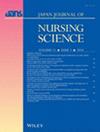Perceptions and attitudes about advance care planning among healthcare professionals of cardiac care: A Q methodology study
Abstract
Aim
Healthcare professionals' perspectives on advance care planning (ACP) remain unclear, particularly among those who care for cardiac patients. Therefore, this study aimed to explore perspectives on ACP among healthcare professionals who provide care to patients with cardiovascular diseases.
Method
Using Q methodology, 40-Q sample statements were derived from an extensive literature review and an in-depth qualitative interview. The P-sample (Q sorters) comprised 10 physicians and 14 nurses. The P-sample filled each grid with a statement on the Q-sorting table. The data were analyzed using the PQMethod.
Results
Four factors with 18 Q sorters emerged and explained 71% of the variance, each contributing 5%–53%. Four factors were labeled: healthcare professional-led, communication-focused ACP (n = 5); early application-weighted, burden-reducing ACP (n = 5); prognostic uncertainty-based, negotiation-focused ACP (n = 5); and patient-value-based, comprehensiveness-focused ACP (n = 3); six Q sorters fell into either confounded or nonsignificant categories. Common perspectives on ACP across all factors emerged, including the conceptual definition of ACP, early employment of ACP as the right time, and needs for educational support and training.
Conclusions
Unique perspectives and common perspectives on ACP across factors emerged among Korean healthcare professionals of cardiac patients. The findings of this study provide initial information on perceptions of and attitudes toward ACP among Korean healthcare providers. Healthcare providers can use these findings to provide educational support and training.

 求助内容:
求助内容: 应助结果提醒方式:
应助结果提醒方式:


